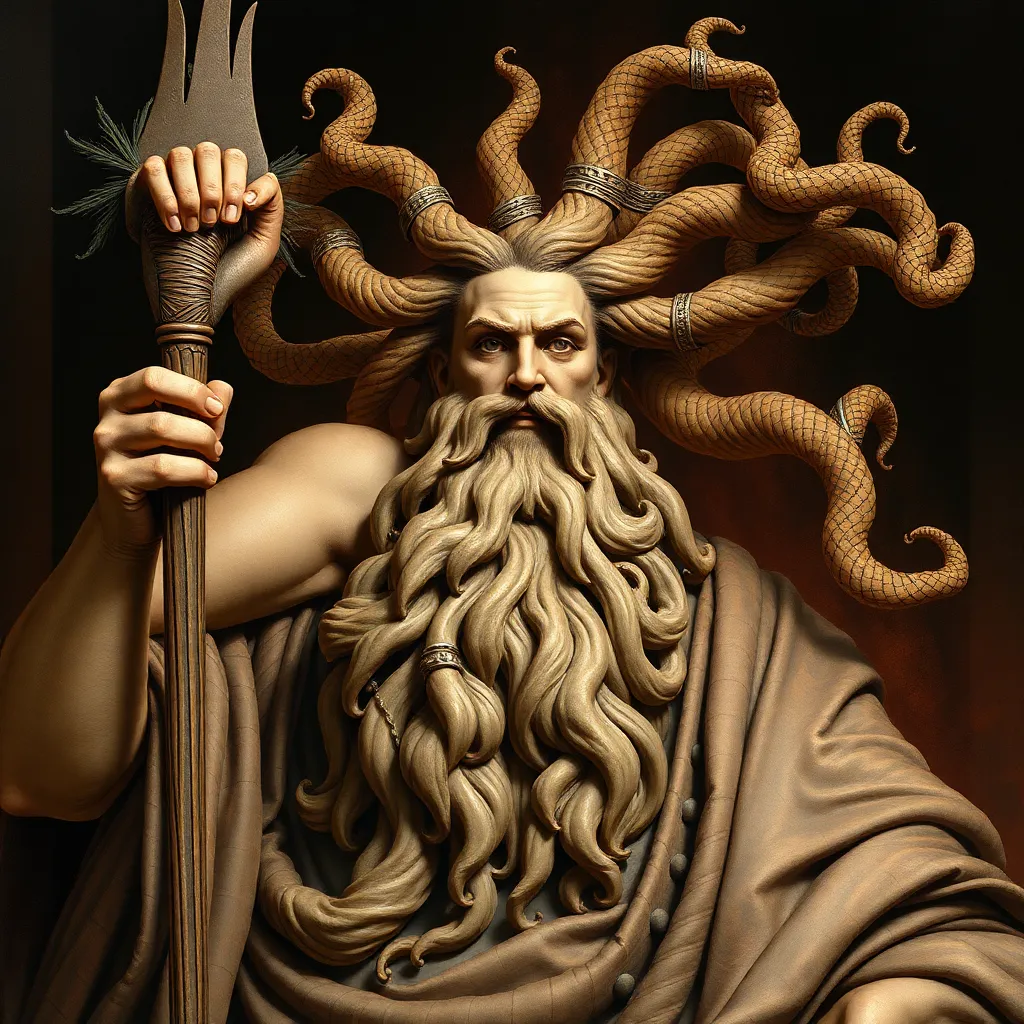Hades in Art: How Ancient Artists Depicted the God of the Underworld
I. Introduction
Hades, the god of the Underworld in Greek mythology, stands as a significant figure whose realm encompasses the afterlife and the souls of the deceased. Often misunderstood as merely a deity of death, Hades embodies various themes including wealth, the inevitability of death, and the cycle of life. The artistic representations of Hades provide invaluable insights into the beliefs and values of ancient Greek society, reflecting their complex relationship with death and the afterlife.
This article explores the evolution of Hades in art, examining how ancient artists depicted this enigmatic figure throughout history. By analyzing different artistic representations, we can better understand the cultural significance of Hades and the messages conveyed through these works.
II. Historical Context of Hades in Ancient Mythology
The origins of Hades can be traced back to ancient Greek mythology, where he is one of the three sons of Cronus and Rhea, alongside Zeus and Poseidon. As the god who ruled the Underworld, Hades played a crucial role in Greek cosmology, governing the realm of the dead and presiding over the souls of departed mortals.
Hades is often depicted as a stern and unyielding figure, reflecting the ancient Greeks’ views on death as a natural and unavoidable part of life. Important myths associated with Hades include the abduction of Persephone and the Twelve Labors of Heracles, which highlight his interactions with both gods and mortals.
III. Early Artistic Representations of Hades
In the early periods of Greek art, particularly during the Pre-Classical era, representations of Hades were relatively sparse and simplistic. These depictions often focused on symbolic elements rather than detailed portrayals of the god himself.
- Minoan Art: Artifacts from the Minoan civilization often featured motifs of the afterlife, hinting at early conceptions of Hades.
- Mycenaean Influence: Mycenaean art introduced more elaborate representations, showcasing the influence of burial practices and the importance of the afterlife.
Key artifacts from these periods include seals and pottery that depict scenes of the underworld, suggesting a reverence for Hades as a vital aspect of life and death.
IV. Classical Period Depictions
The Archaic and Classical periods marked a significant evolution in the representation of Hades. Notable artworks from this time include black-figure vases, sculptures, and reliefs that portrayed Hades with greater complexity.
- Iconography: Hades is often shown with symbols such as the cornucopia, representing wealth, and the bident, signifying his power over the dead.
- Comparison with Other Gods: Unlike the more approachable depictions of gods like Zeus or Apollo, Hades is typically represented as a more somber and distant figure.
These artworks not only illustrate the god’s attributes but also serve as reflections of the societal attitudes towards death and the afterlife during the Classical era.
V. Hades in Roman Art and Culture
As Greek mythology transitioned into Roman culture, Hades became known as Pluto. This shift brought about notable changes in the artistic representations of the god.
- Roman Interpretation: While retaining many characteristics of the Greek Hades, Pluto was often depicted with a more benevolent demeanor, reflecting Roman attitudes towards death and the afterlife.
- Artistic Differences: Roman art featured greater emphasis on realism and emotional expression, resulting in more relatable representations of Pluto than those of Hades.
Examples of Hades/Pluto in Roman art include frescoes in Pompeii and intricate mosaics that showcase his role in the afterlife, often accompanied by Persephone, who was known as Proserpina in Roman mythology.
VI. Thematic Elements in Hades Art
Artworks depicting Hades commonly explore several thematic elements that resonate with ancient beliefs about death and the afterlife.
- Death and the Afterlife: Many pieces focus on the transition from life to death, often illustrating scenes of souls being judged or entering the Underworld.
- Associated Figures: Hades is frequently shown alongside other figures such as Persephone, Charon the ferryman, and the three-headed dog Cerberus, each representing different aspects of the Underworld.
- Color and Composition: The use of dark colors and shadowy forms in artwork symbolizes the mystery and fear associated with death, while the composition often guides the viewer’s eye toward the central figure of Hades.
VII. Influence of Hades on Later Art Movements
The legacy of Hades extended beyond ancient times, influencing various art movements throughout history. During the Renaissance and Baroque periods, artists revisited themes of death and the afterlife, often drawing inspiration from classical representations of Hades.
- Renaissance Art: Artists like Sandro Botticelli and Michelangelo incorporated Hades into their works, reflecting a renewed interest in classical mythology.
- Modern Interpretations: In contemporary art, Hades continues to inspire artists who explore themes of mortality, the subconscious, and existentialism.
- Popular Culture: Hades remains a prominent figure in literature, film, and video games, showcasing an enduring fascination with his character and the themes he embodies.
VIII. Conclusion
Throughout the ages, Hades has been depicted in various forms of art, serving as a reflection of societal beliefs about death, the afterlife, and the human condition. From early depictions in Minoan and Mycenaean art to the sophisticated representations in Classical and Roman works, the portrayal of Hades has evolved significantly.
Understanding Hades through art not only illuminates the ancient worldview but also highlights the ongoing relevance of his character in modern culture. The evolution of Hades’ portrayal underscores the complexities of human emotions surrounding death and the afterlife, echoing through time and continuing to captivate audiences today.




